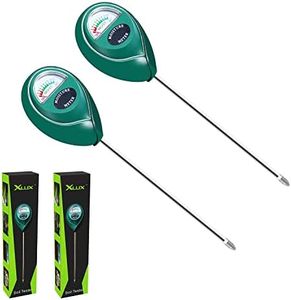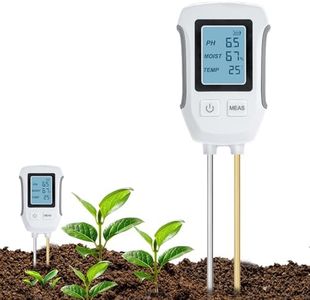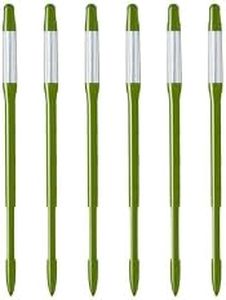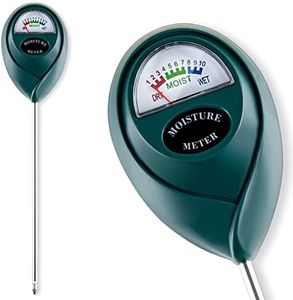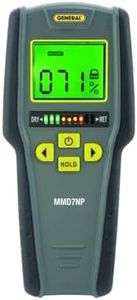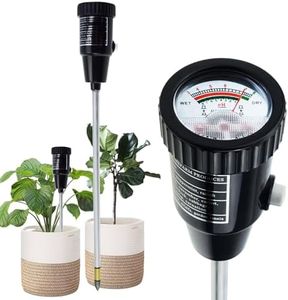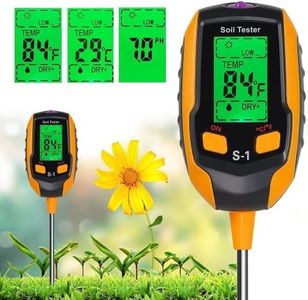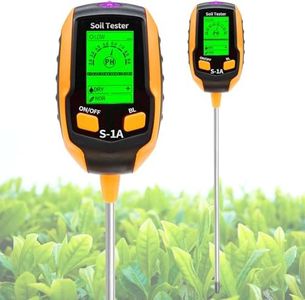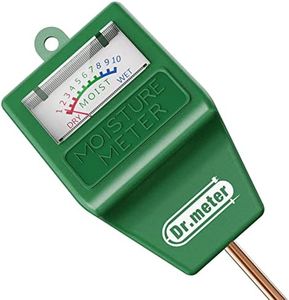We Use CookiesWe use cookies to enhance the security, performance,
functionality and for analytical and promotional activities. By continuing to browse this site you
are agreeing to our privacy policy
10 Best Soil Moisture Meters
From leading brands and best sellers available on the web.Buying Guide for the Best Soil Moisture Meters
Choosing a soil moisture meter might seem a little tricky at first, but it’s really all about matching the device to your plants or garden’s needs. These meters help you take the guesswork out of watering, making sure your plants are neither too dry nor overwatered. The best way to start is to think about where you’ll use it — indoors, outdoors, in pots, or garden beds. Consider how often you want to check moisture and what kind of plants you care for, as each may have different water requirements.Measurement Type (Analog vs. Digital)The measurement type refers to whether a soil moisture meter shows results on a simple dial (analog) or on a digital screen. Analog meters are straightforward, usually displaying moisture on a scale from 'dry' to 'wet,' and don't require batteries. Digital meters often show more detailed numbers and sometimes save readings, but need batteries. If you like simple, immediate feedback, analog might suit you. If you prefer exact numbers and possibly added data, digital is a better fit. Think about which style you find easier and more comfortable to read and use.
Probe LengthProbe length is the size of the stick you push into the soil to measure moisture. Shorter probes work best for small houseplants and shallow pots, while longer probes reach deeper into garden beds or big planters. If you mostly care for window plants or herbs, a shorter probe will be perfect. For outdoor gardens or large containers, look for a longer probe to get accurate readings deeper in the soil.
Reading RangeThis is the scale or range the meter displays, showing how wet or dry the soil is. Some meters use a basic three-section scale (dry, moist, wet), while others offer broader or more detailed numbers. The wider or more detailed the scale, the more precisely you can match watering to your plants’ needs. Think about how much detail you want; some people find a simple wet/dry indicator enough, while others like more exact moisture levels for sensitive plants.
Multi-function CapabilitySome meters do more than just measure moisture; they might also test light levels or soil pH. This is called multi-function capability. If you're growing plants that are sensitive to more than just water—like needing specific light or soil acidity—these features can be useful. However, for straightforward watering help, a simple moisture meter is usually all you need.
Power SourceThis refers to whether the meter needs batteries or works without them. Most analog meters don’t need batteries, making them low fuss. Digital meters usually do require batteries. If you want less to track or replace, a battery-free model is easier, but if you want extra features that often come with digital displays, be prepared to keep batteries around.
Durability and Water ResistanceSince you’ll be using the meter in damp soil, its build quality and water resistance matter. More robust meters handle frequent use and pushing into tough soil better, and water resistance keeps them working longer in wet or humid conditions. If you plan to use your meter outdoors or in heavy clay soil, pick one that feels sturdy and has some water protection.
